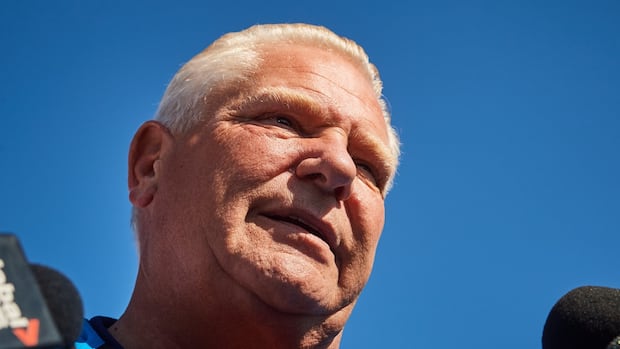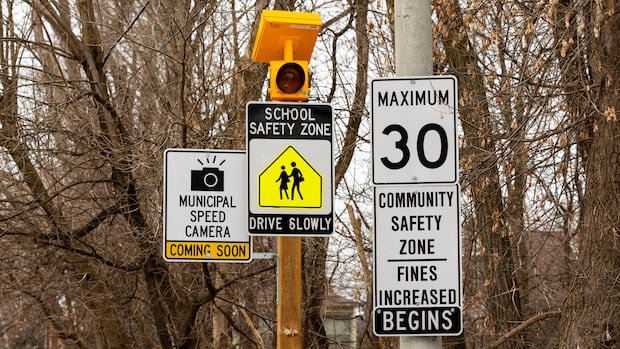Ontario Premier Doug Ford said Thursday morning that his government will soon table legislation to ban the use of speed cameras — a traffic enforcement tool Ford has called an ineffective “tax grab.”
“Over the last few years, we’ve seen municipalities across the province use municipal speed cameras as nothing more than a cash grab,” he said at a news conference in Vaughan Thursday morning. “People are fed up.”
Despite study findings and the opinion of police associations and municipalities to the contrary, Ford said speed cameras don’t slow people down, and the province plans to establish a new provincial fund to help municipalities put in place other “proactive traffic-calming initiatives that stop people from speeding in the first place.” That includes speed bumps, roundabouts, raised crosswalks and curb extensions.
Ford did not say where money for the fund would come from or how much it would cost.
He said the government will also require municipalities with existing speed cameras in school zones to install large signs with flashing lights to slow down drivers.
Others say effectiveness of speed cams is proven
The Ontario Association of Chiefs of Police, the Association of Municipalities of Ontario and the mayor of Toronto all said this month that they support speed cameras.
The police chiefs’ association previously said in a statement that using automated speed enforcement (ASE) cameras “has been proven to reduce speeding, change driver behaviour, and make our roads safer for everyone — drivers, cyclists, pedestrians, and especially children and other vulnerable road users.”
That statement followed a study from SickKids this summer that found ASE cameras had cut speeding around Toronto schools nearly in half.
A new study by SickKids hospital shows speed cameras make the streets safer for kids. The hospital’s head of orthopedic surgery, Andrew Howard, spoke to CBC’s Metro Morning about the study findings and how they can improve kids’ safety.
Ford said Thursday he respects both SickKids and police, but speed cameras aren’t working, calling the issue “black-and-white.”
In Ottawa, speeding compliance in zones with speed cameras increased from 16 per cent to 81 per cent three years after cameras were installed, according to the city’s website.
Ontario mayors weigh in
“I think this is a wrong decision,” said Toronto Mayor Olivia Chow at a news conference on Thursday. “It signals to people that the provincial government is OK with speeding. It will mean our roads are less safe.”
Chow said the premier’s claim that the cameras are a “cash grab” is not accurate. She said the fines go toward traffic lights, crosswalks and help pay for police officers and victims’ services
“We are not putting in the cameras because of any other reasons other than to keep people safe,” Chow said.
She said she plans on introducing a motion with recommendations to improve the speed-camera program including bigger signage and a grace period that would ensure speeders received their first ticket in the mail before another gets issued.
The motion will also ask the province to “provide their road safety rationale, and data, for removing ASE cameras,” according to a news release from her office.
Ford said Thursday only 37 of the province’s 444 municipalities support the cameras.
Vaughan Mayor Steven Del Duca, whose city just ended the use of speed cameras despite an internal study that found cameras reduced the number of speeding vehicles in enforcement areas by 56 per cent daily, said ASE was remarkably unpopular with his constituents.
A CAA study this summer found 73 per cent of Ontarians support speed cameras in targeted zones.
Ford and Del Duca both said they’d heard of drivers getting fined multiple times for going only a few kilometres per hour over the speed limit through camera zones.
Ford and his government weren’t always opposed to these cameras.
While it was Toronto that first asked for speed cameras back in 2016, and former premier Kathleen Wynne who made changes to the Highway Traffic Act a year later to allow for their use in school and community zones, it was the Ford government that passed enabling regulations in December of 2019 that allowed municipalities to run such programs.








